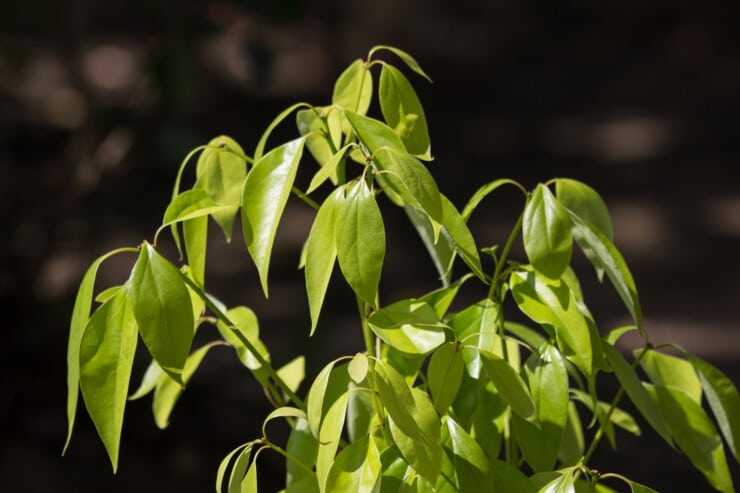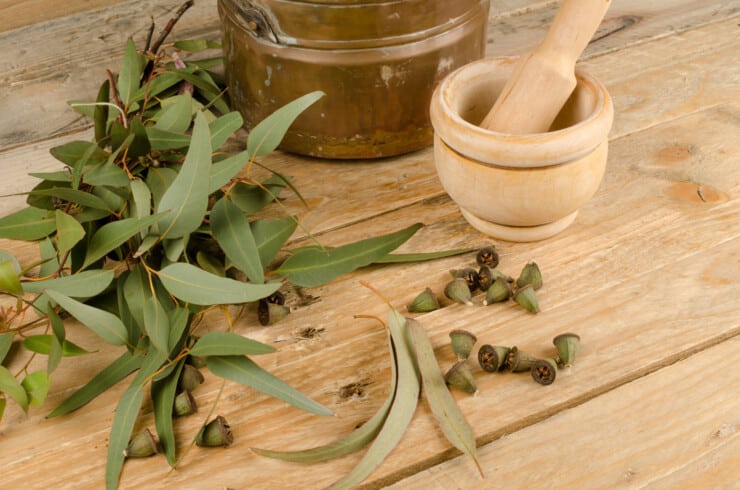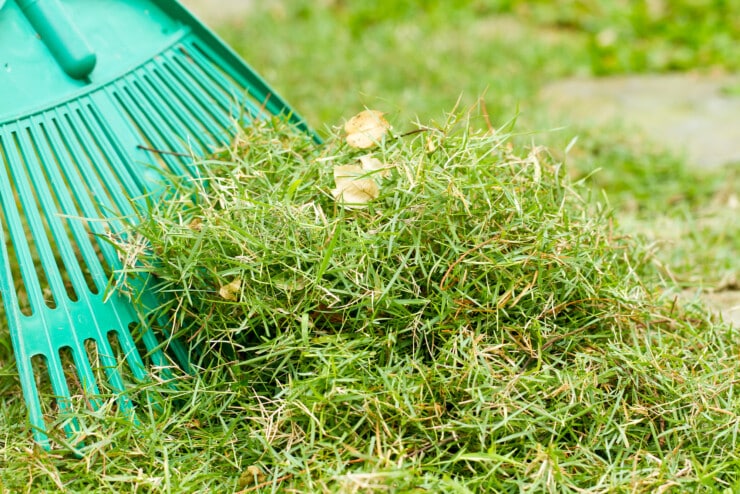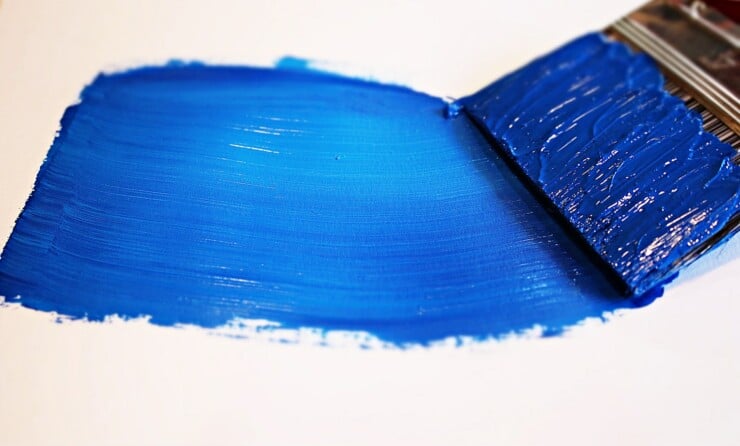Why Is There a Strange Camphor Smell in My House?
Camphor is a naturally occurring organic compound that is frequently found in creams, ointments, and lotions.
As a homeowner, however, noticing such a strange smell in my house is unusual.
So decided to investigate this unusual occurrence, and I’m excited to share my findings with you.
At first, I was puzzled by the presence of this unfamiliar scent, but as I researched more about camphor and its uses, I learned that it has various applications in both health and home remedies.

Camphor oil is derived from the wood of camphor trees, which made me wonder if there might be a connection between this compound and the strange smell in my home.
There are different reasons why the smell of camphor might be present in a house, and it turns out that there are several potential explanations.
Strange Camphor: Understanding the Phenomenon
Camphor has several interesting properties that can benefit our lives.
Its ability to clear the mind, elevate mood, and refresh the environment makes it a valuable addition to any household (Housing News).
Not only is it an evergreen tree native to China and Japan, but also holds biological and medicinal properties that can improve our homes (8 Billion Trees).
For example, camphor is considered an ideal natural remedy for coughs and colds, often being used in small quantities to provide relief when needed (House of Mangalam).
However, it’s important to understand that using camphor in the home must be done with care, as excessive amounts can actually worsen our conditions.
For this reason, consulting with a doctor for proper dosage and usage is highly recommended (House of Mangalam).
Another aspect of camphor that intrigued me was its purity.
I came across information on how to identify pure camphor, which is essential when using it in the home.
Adulterated camphor can have negative effects, so it’s vital to know the properties of the genuine substance, such as its bright orange flame with black smoke when burned, and its lingering smell (House of Mangalam).
Understanding the strange phenomenon of camphor in the home can offer unique benefits to our lives, but it’s critical to use the substance responsibly and with proper guidance.
Causes of Strange Camphor Presence
In my experience, there are typically a few main reasons as to why a strange camphor presence may be detected in a home.
Being aware of these factors can help provide context for the source and potential effects of the camphor in question.
I will provide an overview of environmental factors, chemical interactions, and human-made sources that can contribute to these unusual camphor occurrences.
Environmental Factors
First and foremost, it’s essential to consider the environment around the home.
I’ve noticed that camphor trees, known for their invasive species status, may grow nearby (8 Billion Trees).
These trees can release camphor-like scents, especially when their leaves, wood, or bark are disturbed.
Consequently, this natural source may explain the unusual presence of camphor.
Chemical Interactions
Another reason for the unusual presence of camphor in a house could be due to chemical interactions.
There are times when common household substances can react with each other, producing odors or scents similar to camphor.
For instance, specific cleaning solutions, room fresheners, or even scented candles might contain compounds that, when mixed or exposed to air, give off a camphor-like aroma.
In these cases, it’s essential to identify the source of the chemical reaction and address it accordingly.
Human-Made Sources
Human activities might also contribute to the strange camphor presence in a home.
An example I’ve seen is when someone burns camphor for spiritual or religious purposes, believing that it can remove negativity and bring positivity to the living space (News NCR).
Camphor can also be used as a remedy for various ailments when applied topically or as a part of alternative medicine treatments.
As a result, it’s possible that human-made sources are introducing camphor into the home, either intentionally or inadvertently.
Effects on Health and Well-Being
Let’s discuss the physical reactions, mental and emotional responses, and long-term implications associated with camphor exposure.
Physical Reactions
Exposure to camphor could trigger various physical reactions, depending on how it is used.
When applied topically, camphor can irritate the skin, cause rashes, and even lead to eczema in some individuals (STYLECRAZE).
In high doses or inappropriate use, camphor has been linked to symptoms such as convulsions, lethargy, ataxia, severe nausea, and vomiting (PMC).
Mental and Emotional Responses
Camphor exposure can also affect mental and emotional well-being.
Some reported side effects to include headaches, dizziness, confusion, and even hallucinations when used inappropriately (McGill University).
Furthermore, camphor may aggravate respiratory issues, which could indirectly impact one’s emotional state and overall well-being (STYLECRAZE).
Long-Term Implications
Regarding long-term implications, I discovered that camphor consumption could lead to severe side effects and even death (WebMD).
It is essential to be cautious and informed when dealing with camphor, especially when using it for medical purposes.
Its potential risks for both physical and mental health should not be underestimated.
While camphor might serve specific uses, it is crucial to be aware of the potential health implications and handle it with care.
Understanding its effects could help safeguard our well-being as well as those around us.
How to Identify Strange Camphor in Your House
The first thing I do when I suspect there’s strange camphor in my house is smell it.
Camphor has a distinct, strong menthol odor that is released when the leaves and twigs are crushed (tallahassee.com).
If I smell a familiar menthol scent, that’s a good indicator that there might be camphor nearby.
To determine if the camphor is pure, I take a closer look at the smell.
Pure camphor has a smooth odor, while adulterated camphor tends to be stronger and more similar to vapor rubs (House of Mangalam).
If the smell makes my nose itch, I assume it’s not pure.
Next, I examine the camphor visually.
If the material is from a camphor tree, I might see leaves, bark, or fruit.
Crushing a leaf or ripping off a small piece of bark can help me detect the camphor smell, while the tree’s fruits are another indicator (8 Billion Trees).
If I recognize these features in the camphor, I can be pretty sure it’s from a tree.
Lastly, if I’m unsure about the origin of the camphor in my house, I consider consulting a professional for assistance.
Pest control experts can assist with bug and insect identification(PestWorld), while arborists can help identify tree species and determine if there’s a camphor tree in my yard contributing to the issue.
Remedies and Solutions
Here are some effective remedies and solutions that can help you tackle this challenge.
Proper Ventilation
One key aspect of dealing with camphor in the house is providing proper ventilation.
Make sure to open windows and doors regularly to circulate fresh air and prevent any accumulation of camphor vapors.
I’ve also found it helpful to utilize exhaust fans in the kitchen and bathroom areas to expel any lingering camphor fumes.
Cleaning Techniques
Another crucial step in controlling camphor-related issues is adopting effective cleaning techniques.
I’ve found that regularly sweeping and mopping floors, especially with a solution consisting of camphor powder and water, creates a positive environment.
Make a point to clean surfaces and corners, where camphor residue may accumulate, with soap and warm water.
Product Recommendations
Incorporating certain products into my home care routine has helped me manage camphor problems as well.
I recommend using camphor-free alternatives for candles, incense, and air fresheners to avoid introducing additional camphor into your living spaces.
Essential oils such as lavender or eucalyptus can also be used as natural alternatives for insect repellent, keeping camphor-infested pests at bay.
By combining these remedies and solutions, I’ve been able to manage camphor issues in my home effectively.
Remember to maintain proper ventilation, apply efficient cleaning techniques, and consider some recommended products to achieve a comfortable and camphor-free living environment.
Prevention: Minimizing Strange Camphor Risks

Camphor can have several health risks, particularly for young children who may accidentally ingest it.
In fact, even small doses can prove fatal for infants and children, and camphor products are toxic with the potential to cause seizures, stomachaches, and other symptoms when ingested or used in large amounts (New York City, PMC).
With this in mind, I believe it’s crucial to take preventive measures to minimize risks related to strange camphor in my house.
First and foremost, I’ll make sure to store camphor products out of reach of children and pets.
Ideally, I’ll place them in high cabinets or locked containers that cannot be easily accessed.
It’s also helpful to avoid using camphor-containing products in areas where kids or pets frequent, like playrooms or pet bedding spots.
Since camphor’s strong aroma is often found in oils, inhalants, and ointments, I’ll exercise caution when using these products to treat ailments like colds or muscle pains (Healthline).
Instead of adding large amounts of camphor to water in a room humidifier, I’ll opt for safer alternatives like essential oils such as eucalyptus or lavender.
Here’s a brief list of safety tips to remember:
- Store camphor products out of reach of children and pets
- Avoid using camphor-containing products in areas where children and pets frequent
- Opt for safer alternatives like eucalyptus or lavender essential oils
By taking these preventive steps, I hope to minimize the risks associated with strange camphor in my house, ensuring a safer environment for everyone who lives in, or visits, my home.
Final Thoughts
After exploring the various aspects of using camphor in the house, I have come to appreciate its versatility and numerous benefits.
As a natural insecticide, camphor has helped me combat annoying pests like ants, bed bugs, and mosquitoes inside my home.
This has given me peace of mind, knowing that my living space is free of these unwelcome intruders.
In addition to its insect-repelling properties, camphor has a soothing effect on the mind and body.
I’ve noticed that burning camphor regularly creates a calming ambiance in my home, erasing any signs of negativity or tension.
This has proven to be especially helpful during times of stress, as it promotes a more peaceful and harmonious environment.
I can’t help but appreciate the air-freshening aspects of using camphor.
The distinct aroma it releases not only purifies my indoor air but also leaves my house smelling fresh and clean.
This has significantly improved the overall atmosphere of my living space, and I couldn’t be happier with the results.
Incorporating camphor into my home routine has truly been a game-changer.
Its wide range of applications—from pest control to air freshening—has convinced me that this natural compound is an essential addition to my household toolkit.
I highly recommend giving camphor a try if you’re seeking new ways to enhance your living environment.







